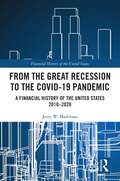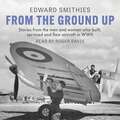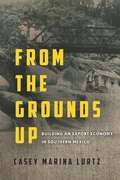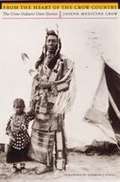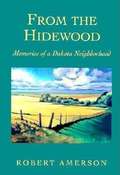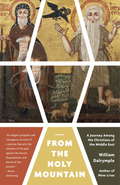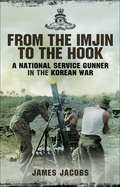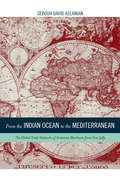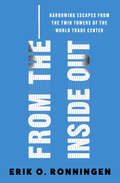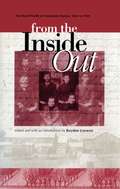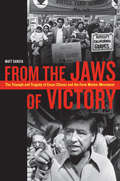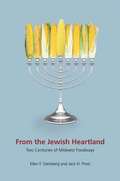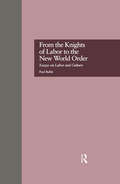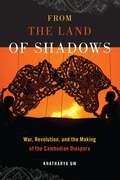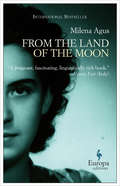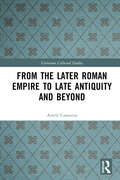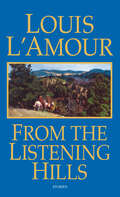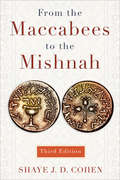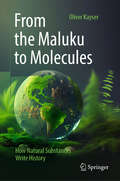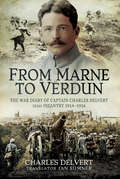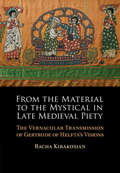- Table View
- List View
From the Great Recession to the Covid-19 Pandemic: A Financial History of the United States 2010-2020 (Financial History of the United States)
by Jerry W. MarkhamThis volume narrates the financial history of the United States during a period of great upheaval in the early part of the twenty-first century. It is divided into three chronological sections: the first section describes the recovery of financial markets after the Great Recession. It begins with an overview of the state of the economy at the start of the new decade, including some of the political storms affecting the economy and financial markets. It explores the uneven nature of the recovery and volatility in the Treasury during these years. The second section sets forth regulatory responses to the Financial Crisis of 2008, including the massive fines imposed on large banks by a swarm of regulators. It examines the ‘too big to jail’ prosecution model, cases involving Libor and foreign exchange manipulation, and the impact of rogue traders. It also looks as developments in payment systems, and the rise of crowdfunding as a source of capital, and high-frequency trading. And the third section describes the rules adopted under the Dodd-Frank Act of 2010 that broadly affected financial markets. It also recounts the Trump trade wars and ends with an account of the financial and economic turmoil that occurred during the Covid-19 pandemic in 2020. The volume will be essential addition to academic and public libraries with readers drawn from business schools, departments of economics and finance, and historians.
From the Ground Up: Stories from the men and women who built, serviced and flew aircraft in WWII (W&N Military)
by Edward Smithies'Fascinating ... this collection illuminates corners of the wartime world ... it provides a valuable and often entertaining window' GUARDIAN'The horrors have not been suppressed. Everyone who speaks was very young then. You sense their wonder that they did the things they recall' INDEPENDENT ON SUNDAYWhen we remember the Second World War in the air, we think of fighter pilots and bomber crews. But what was it like for the men and women working as ground crew and in the aircraft factories who also played a crucial role in defeating Hitler? What was it like making history? What sense did these individuals have of what they were doing, either at the time or later? Did they feel they were caught up in the tide of great events? Or were they simply doing their demanding and often dangerous duty?Originally published as ACES, ERKS AND BACKROOM BOYS
From the Ground Up: The Story of “Brother Van”, Montana Pioneer Minister, 1848-1919
by Robert W. LindThis book, which was first published in 1961, is a biography of Rev. William Wesley Van Orsdel (1848-1919), known as “Brother Van”, a Methodist circuit rider in Montana who made a significant contribution to the spread of Methodism in Montana and the early development of the state’s public institutions. Throughout his career, Brother Van founded churches, universities, and hospitals; he converted and ministered to homesteaders, miners, and Native Americans; he worked with the elites and the poor, the famous and the forgotten in a career that spanned nearly 50 years.“To paint a word picture of the pioneer preacher and the pioneer territory which captures the real feeling which Brother Van had for Montana and which Montana had for Brother Van is almost impossible. But Bob Lind, a part of the Church which Brother Van helped to establish, has come closer than any writer to date.“Lind’s picture of Brother Van and his times is reliably accurate, though it was no easy task to detach fact from fiction in giving account of a man about whom stories grew like grass on the Montana prairie. He found in Brother Van’s life so much adventure and color that he only needed to tell the story as it was.“When you finish reading this book you will have met the best of the early frontier in the Rocky Mountain west. You will follow a man who made a pulpit for preaching the Good News out of the freighter’s or cowboy’s camp, the cabin or the ranch home, the Indian tepee, the barroom or the street corner. And you will see that to all of his congregations, formal or informal, he always gave his best in word and song.”—George A. Harper, Foreword
From the Grounds Up: Building an Export Economy in Southern Mexico
by Casey Marina LurtzIn the late nineteenth century, Latin American exports boomed. From Chihuahua to Patagonia, producers sent industrial fibers, tropical fruits, and staple goods across oceans to satisfy the ever-increasing demand from foreign markets. In southern Mexico's Soconusco district, the coffee trade would transform rural life. A regional history of the Soconusco as well as a study in commodity capitalism, From the Grounds Up places indigenous and mestizo villagers, migrant workers, and local politicians at the center of our understanding of the export boom. An isolated, impoverished backwater for most of the nineteenth century, by 1920, the Soconusco had transformed into a small but vibrant node in the web of global commerce. Alongside plantation owners and foreign investors, a dense but little-explored web of small-time producers, shopowners, and laborers played key roles in the rapid expansion of export production. Their deep engagement with rural development challenges the standard top-down narrative of market integration led by economic elites allied with a strong state. Here, Casey Marina Lurtz argues that the export boom owed its success to a diverse body of players whose choices had profound impacts on Latin America's export-driven economy during the first era of globalization.
From the Heart of the Crow Country: The Crow Indians' Own Stories
by Herman J. Viola Joseph Medicine CrowThe world of the Crow Indians comes to life in this extraordinary collection of stories from respected elder and famed storyteller Joseph Medicine Crow. Raised by traditional grandparents, who remembered life before the reservation days, MedicineøCrow as a child would listen to stories that his grandfather and other elders told during sweat baths. He also learned about the Indian wars of earlier years from White Man Runs Him, one of Custer's Crow scouts. Medicine Crow became a passionate collector of stories and information about Crow life and history. This volume is a fascinating and informative collection of legends, humorous tales, history, and detailed accounts of life and culture, all told from Crow points of view.
From the Hidewood: Memories of a Dakota Neighborhood
by Robert C. AmersonIn 21 interwoven stories, author Robert Amerson re-creates life on his family's 160-acre farm in the remote Hidewood Hills of eastern South Dakota from 1934 to 1942. In exquisite detail, he portrays a particular moment in time with a power that could help many readers better understand their own pasts.
From the Holy Mountain
by William DalrympleIn the spring of A.D. 587, John Moschos and his pupil Sophronius the Sophist embarked on a remarkable expedition across the entire Byzantine world, traveling from the shores of Bosphorus to the sand dunes of Egypt. Using Moschos's writings as his guide and inspiration, the acclaimed travel writer William Dalrymple retraces the footsteps of these two monks, providing along the way a moving elegy to the slowly dying civilization of Eastern Christianity and to the people who are struggling to keep its flame alive. The result is Dalrymple's unsurpassed masterpiece: a beautifully written travelogue, at once rich and scholarly, moving and courageous, overflowing with vivid characters and hugely topical insights into the history, spirituality and the fractured politics of the Middle East.
From the House to the Streets: The Cuban Woman's Movement for Legal Reform, 1898-1940
by K. Lynn StonerFrom the House to the Streets is the first study on feminists and the feminist movement in Cuba between 1902 and 1940. In the four decades following its independence form Spain in 1898, Cuba adopted the most progressive legislation for women in the western hemisphere. K. Lynn Stoner explains how a small group of women and men helped to shape broad legal reforms: she describes their campaigns, the version of feminism they adopted with all its contradictions, and contrasts it to the model of feminism North Americans were transporting to Cuba. Stoner draws on rich primary sources--texts, personal letters, journal essays, radio broadcasts, memoirs from women's congresses--which allow these women to speak in their own voices. In reconstructing the mentalit of Cuban feminists, who came primarily from a privileged social status, Stoner shows how feminism drew from traditional notions of femininity and a rejection of gender equality to advance a cause that assumed women's expanded roles were necessary for social progress. She also examines the values of the progressive male politicians who supported feminists and worked to change Cuban laws.
From the Imjin to the Hook: A National Service Gunner in the Korean War
by James JacobsThe British Armys considerable contribution to The Korean War 1950 1953 was largely composed of conscripts or national servicemen. Plucked from civilian life on a lottery basis and given a short basic training, some like Jim Jacobs volunteered for overseas duty and suddenly found themselves in the thick of a war as intensive and dangerous as anything the Second World War had had to offer.As a member of 170 Independent Mortar Battery RA from March 1951 to June 1952 Jim was in the frontline at the famous Battle of the Imjin River. By great luck, he evaded capture and death unlike so many. He returned to the UK only to volunteer again for a second tour with 120 Light Battery from March 1953 to March 1954. During this period, he was in the thick of the action at the Third Battle of the Hook during May 1953.In this gripping memoir, Jim calmly and geographically recounts his experiences and emotions from joining the Army through training, the journeys by troopship and, most importantly, on active service in the atrocious and terrifying war fighting that went on in a very foreign place.
From the Indian Ocean to the Mediterranean: The Global Trade Networks of Armenian Merchants from New Julfa
by Sebouh David AslanianDrawing on a rich trove of documents, including correspondence not seen for 300 years, this study explores the emergence and growth of a remarkable global trade network operated by Armenian silk merchants from a small outpost in the Persian Empire. Based in New Julfa, Isfahan, in what is now Iran, these merchants operated a network of commercial settlements that stretched from London and Amsterdam to Manila and Acapulco. The New Julfan Armenians were the only Eurasian community that was able to operate simultaneously and successfully in all the major empires of the early modern world--both land-based Asian empires and the emerging sea-borne empires--astonishingly without the benefits of an imperial network and state that accompanied and facilitated European mercantile expansion during the same period. This book brings to light for the first time the trans-imperial cosmopolitan world of the New Julfans. Among other topics, it explores the effects of long distance trade on the organization of community life, the ethos of trust and cooperation that existed among merchants, and the importance of information networks and communication in the operation of early modern mercantile communities.
From the Inside Out: Harrowing Escapes from the Twin Towers of the World Trade Center
by Erik O. RonningenFifteen survivors of the September 11 attack on the World Trade Center share their dramatic stories of that fateful day. On September 11, 2001, tens of thousands in New York City awakened to a beautiful Tuesday morning. Just like any other day, they completed their morning routines and headed to work. For Erik Ronningen, that was his job with the Port Authority of New York and New Jersey at the World Trade Center. Ronningen had a big, career-changing meeting scheduled for 9 A.M. At 8:46 A.M., Erik was on the seventy-first floor of the North Tower when American Airlines Flight 11 struck the building. As acrid smoke filled the building, he made his way downstairs, hoping to get to the Security Command Center in the basement of the South Tower. However, he was unable to reach it and was the last person to exit the South Tower alive . . . In From the Inside Out, Ronningen shares the story of his harrowing escape, along with stories from fourteen other survivors. These gripping accounts chronicle individuals displaying courage and heroism when their ordinary day quickly became a fiery scramble for survival.
From the Inside Out: The Rural Worlds of Mennonite Diarists
by Royden LoewenHistorian Royden Loewen has brought together selections from diaries kept by 21 Mennonites in Canada between 1863 and 1929, some translated from German for the first time. By skillfully comparing and contrasting a wide cross-section of lives, Loewen shows how these diaries often turn the hidden contours of household and community "inside out." The writers featured were ordinary rural people: young women and grandmothers, rural preachers and landless householders. They include a teenaged boy who immigrated from Russia to Manitoba in 1875 as well as a successful merchant, a traveling evangelist, and a devout, conservative church elder. An elderly grandfather recounted the daily circuit of his children's homes, while 19-year-old Marie Schoeder wrote of her literary aspirations, her "secret hope" that some day she would "write things that have a real worth, things that are worth printing, and things that other folks would love to read and pay for." From the Inside Out also contrasts diaries from two distinct Mennonite communities in Canada. The Swiss-American Mennonites in Waterloo County, Ontario, faced rapid urbanization, while the Dutch-Russian Mennonites in southern Manitoba maintained their more rural environment. The diaries mirror their writers' preoccupations with work and weather, but they also reveal a communityís social structure and round of activities such as weddings, funerals, and worship services. In the process of diary-keeping, the writers sought to make sense of a dynamic and often unpredictable world. Reading what they chose to record is to learn much about their culture. Their writings provide glimpses of their lives, their collective mindset, and their history as a people.
From the Jaws of Victory
by Matthew GarciaFrom the Jaws of Victory:The Triumph and Tragedy of Cesar Chavez and the Farm Worker Movement is the most comprehensive history ever written on the meteoric rise and precipitous decline of the United Farm Workers, the most successful farm labor union in United States history. Based on little-known sources and one-of-a-kind oral histories with many veterans of the farm worker movement, this book revises much of what we know about the UFW. Matt Garcia's gripping account of the expansion of the union's grape boycott reveals how the boycott, which UFW leader Cesar Chavez initially resisted, became the defining feature of the movement and drove the growers to sign labor contracts in 1970. Garcia vividly relates how, as the union expanded and the boycott spread across the United States, Canada, and Europe, Chavez found it more difficult to organize workers and fend off rival unions. Ultimately, the union was a victim of its own success and Chavez's growing instability. From the Jaws of Victory delves deeply into Chavez's attitudes and beliefs, and how they changed over time. Garcia also presents in-depth studies of other leaders in the UFW, including Gilbert Padilla, Marshall Ganz, Dolores Huerta, and Jerry Cohen. He introduces figures such as the co-coordinator of the boycott, Jerry Brown; the undisputed leader of the international boycott, Elaine Elinson; and Harry Kubo, the Japanese American farmer who led a successful campaign against the UFW in the mid-1970s.
From the Jewish Heartland: Two Centuries of Midwest Foodways
by Ellen F. Steinberg Jack H. ProstFrom the Jewish Heartland: Two Centuries of Midwest Foodways reveals the distinctive flavor of Jewish foods in the Midwest and tracks regional culinary changes through time. Exploring Jewish culinary innovation in America's heartland from the 1800s to today, Ellen F. Steinberg and Jack H. Prost examine recipes from numerous midwestern sources, both kosher and nonkosher, including Jewish homemakers' handwritten manuscripts and notebooks, published journals and newspaper columns, and interviews with Jewish cooks, bakers, and delicatessen owners. With the influx of hundreds of thousands of Jews during the late nineteenth and early twentieth centuries came new recipes and foodways that transformed the culture of the region. Settling into the cities, towns, and farm communities of Ohio, Indiana, Wisconsin, Michigan, Illinois, Missouri, Iowa, and Minnesota, Jewish immigrants incorporated local fruits, vegetables, and other comestibles into traditional recipes. Such incomparable gustatory delights include Tzizel bagels and rye breads coated in midwestern cornmeal, baklava studded with locally grown cranberries, dark pumpernickel bread sprinkled with almonds and crunchy Iowa sunflower seeds, tangy ketchup concocted from wild sour grapes, Sephardic borekas (turnovers) made with sweet cherries from Michigan, rich Chicago cheesecakes, native huckleberry pie from St. Paul, and savory gefilte fish from Minnesota northern pike. Steinberg and Prost also consider the effect of improved preservation and transportation on rural and urban Jewish foodways, as reported in contemporary newspapers, magazines, and published accounts. They give special attention to the impact on these foodways of large-scale immigration, relocation, and Americanization processes during the nineteenth century and the efforts of social and culinary reformers to modify traditional Jewish food preparation and ingredients. Including dozens of sample recipes, From the Jewish Heartland: Two Centuries of Midwest Foodways takes readers on a memorable and unique tour of midwestern Jewish cooking and culture.
From the Knights of Labor to the New World Order: Essays on Labor and Culture (500 Tips #Vol. 1089)
by Paul BuhleThis collection brings together the labor and cultural studies of the author over the past 20 years, during which time the fields of social history, women's history, ethnic studies, public history, and oral history have all been transformed. The essays, some rewritten or newly available and the rest original to this volume, offer important examples of historical analysis, comment on changing scholarly perceptions, and the public uses of history. By drawing upon his own research in popular culture, Yiddish periodicals, interracial unionism, oral history and a variety of other sources, the author demonstrates how the field of labor specialists has become the domain of social historians exploring a rich American past.
From the Land of Shadows: War, Revolution, and the Making of the Cambodian Diaspora (Nation of Nations #14)
by Khatharya UmIn a century of mass atrocities, the Khmer Rouge regime marked Cambodia with one of the most extreme genocidal instances in human history. What emerged in the aftermath of the regime's collapse in 1979 was a nation fractured by death and dispersal. It is estimated that nearly one-fourth of the country's population perished from hard labor, disease, starvation, and executions. Another half million Cambodians fled their ancestral homeland, with over one hundred thousand finding refuge in America.From the Land of Shadows surveys the Cambodian diaspora and the struggle to understand and make meaning of this historical trauma. Drawing on more than 250 interviews with survivors across the United States as well as in France and Cambodia, Khatharya Um places these accounts in conversation with studies of comparative revolutions, totalitarianism, transnationalism, and memory works to illuminate the pathology of power as well as the impact of auto-genocide on individual and collective healing. Exploring the interstices of home and exile, forgetting and remembering, From the Land of Shadows follows the ways in which Cambodian individuals and communities seek to rebuild connections frayed by time, distance, and politics in the face of this injurious history.
From the Land of the Moon
by Milena Agus“Powerful . . . The vivid descriptions of the Sardinian landscape are a fitting complement to the heroine’s conflicted heart” (Kirkus Reviews, starred review).As this compelling novel opens, a young unnamed woman reflects on the life of her bewitching, eccentric, and fiercely emotional grandmother, whose abiding search for love spans much of the twentieth century. In 1943, as American bombs fall on the city of Cagliari, she is thirty and considered an old maid, still living at home with her parents. But when the bombing ceases, and despite her protests, her father forces her to marry the first man to propose, an older widower she doesn’t love. After suffering several miscarriages, she is sent for treatment at a spa on the mainland, where she falls in love with an injured Italian army veteran. Back home, she gives birth to a son. She never reveals the affair to her husband—but decades later, she returns to the mainland and travels to her former lover’s hometown of Milan. Dressed in her finest coat and shoes, she wanders the streets in search of the elusive veteran . . .Set against a backdrop of rugged mountains and Italian villages lost in time, this international bestselling novel is a multigenerational family saga about love, lust, and country.“Agus’s descriptions of the everyday are as beautiful and haunting as her portrayal of life’s most dramatic episodes. Add an unexpected ending and the result is a graceful, powerful book.” —Publishers Weekly (starred review)
From the Later Roman Empire to Late Antiquity and Beyond (Variorum Collected Studies)
by Averil CameronAveril Cameron is one of the leading historians of late antiquity and Byzantium. This collection (Cameron’s third in the Variorum series) discusses the changing approach among historians of the later Roman empire from the 1960s to the present and the articles reproduced have been chosen to reflect both these wider changes in treatments of the subject as well as Cameron’s own development as a historian over many decades. It provides a revealing and important survey of some profound historiographical changes. Her volume contains fundamental papers and reviews that tell a story in which she has played a leading part. They move from her early days as an ancient historian to her important contribution in the establishment of the field of late antiquity and point to her later work as a Byzantinist, a trajectory rivalled by few other scholars. The book will be important for scholars and students of the later Roman empire and late antiquity, and for anyone interested in the inheritance of Edward Gibbon, the perennial questions about the end of the Roman empire and its supposed decline, or the emergence of Islam in the early seventh century and its relation to the late antique world.
From the Listening Hills
by Louis L'AmourIn peerless fiction spanning five decades and as many continents, Louis L'Amour has proven himself the preeminent storyteller of the American experience. Whether set aboard a ship trapped in enemy seas or amidst a showdown in the deserts of Death Valley, his stories brilliantly capture the heroic and indomitable spirit of our great land.From The Listening HillsThe twelve stories in this collection--appearing for the first time in one complete volume--run the spectrum of human emotions as they transport us from the fading majesty of the Old West to a small-town football field to the lonely canyons of one man's mind. These classic tales of adventure, mystery, mysticism, and suspense epitomize the uniquely American yearning for connection and roots, justice and love, as only L'Amour can. Here is a diverse group of heroes and traitors, outlaws and lawmen, the innocent, the guilty, and those who operate in the shadowy territory outside the reach of justice. The wastelands of Death Valley form the backdrop for the tale of a desperate man who leads his pursuers into a desert trap--where heat and thirst are his only weapons. A rodeo rider framed for a crime he didn't commit takes a wild ride on a legendary bronco that may help him catch the real killers. An American pilot flies Russian and British agents into the labyrinthine forests of Asiatic Russia--only to discover that one of them is a traitor. A hit man discovers the fatal limits of friendship; and a quest for revenge becomes a frantic race to find a cache of gold hidden in the drifting sands of the Southwest. And in a powerful and moving parable, an Indian boy must lead his family across a drought-ravaged land with nothing to guide him but his faith.The gripping title story counts down the final hours of a wounded man struggling to fend off his enemies and certain death. Before time runs out, he must finish the most important task of his life: a letter to his unborn son that will vindicate the family name.Filled with a special brand of passion and drama, From the Listening Hills is an exemplary collection that showcases the enduring talents of one of America's most beloved authors.From the Hardcover edition.
From the Maccabees to the Mishnah
by Shaye J. D. CohenIn this new edition of a best-selling classic, Shaye Cohen offers a thorough analysis of Judaism's development from the early years of the Roman Empire to the formative period of rabbinic Judaism. Cohen's synthesis of religion, literature, and history offers deep insight into the nature of Judaism at this key period, including the relationship between Jews and Gentiles, the function of Jewish religion in the larger community, and the development of normative Judaism and other Jewish sects. In addition, Cohen provides clear explanations concerning the formation of the biblical canon and the roots of rabbinic Judaism. Now completely updated and revised, this book remains the clearest introduction to the era that shaped Judaism and provided the context for early Christianity. The Library of Early Christianity is a series of eight outstanding books exploring the Jewish and Greco-Roman contexts in which the New Testament developed.
From the Maluku to Molecules: How Natural Substances Write History
by Oliver KayserNatural products are a marvel of evolution. Plants are chemical factories and have produced a vast number of highly diverse and interesting natural substances with their extraordinary properties, which we humans have been using for centuries to relieve and cure diseases. At the latest since the discovery of penicillin, natural substances have become an important source of medicines, but we know only very few of the presumably many millions that are still waiting to be discovered. Important antibiotics, immunosuppressants, anticancer agents, hormones, and antiviral agents are among the natural products. But do natural products still matter in the age of biotechnology and genetic engineering? Yes, more than ever, because medicinal chemists draw creative inspiration for their syntheses from nature to develop the next blockbuster in medicine. Oliver Kayser tells the story of natural products and medicinal plants in this book in a highly informative and amusing way from a new perspective. He explores how natural products from naturopathy gave birth to the pharmaceutical industry, how they shaped our society as medicines and remedies, enabled wars, and paved the way to Nobel Prizes. The author paints a fascinating panorama of natural product chemistry in plants, microorganisms, and animals. Starting with the first isolations at the beginning of the industrial revolution, he leads us with the ideas and enthusiasm of many scientists into the modern era of drug testing, computer chemistry, and the highly successful serendipitous discoveries of active ingredients. Natural product research in the laboratory has an enormous impact on our lives today. The author offers a glimpse over the shoulder of how the search for the new drugs of tomorrow works today. This book is the ultimate book from the pen of a scientist deeply rooted in research, providing the reader with an enlightening and at the same time entertaining insight into how scientists think and how arduous research can be.
From the Margins: Historical Anthropology and Its Futures
by Brian Keith AxelHistorical anthropology: critical exchange between two decidedly distinct disciplines or innovative mode of knowledge production? As this volume's title suggests, the essays Brian Keith Axel has gathered in From the Margins seek to challenge the limits of discrete disciplinary epistemologies and conventions, gesturing instead toward a transdisciplinary understanding of the emerging relations between archive and field. In original articles encompassing a wide range of geographic and temporal locations, eminent scholars contest some of the primary preconceptions of their fields. The contributors tackle such topics as the paradoxical nature of American Civil War monuments, the figure of the "New Christian" in early seventeenth-century Peru, the implications of statistics for ethnography, and contemporary South Africa's "occult economies. " That anthropology and history have their provenance in--and have been complicit with--colonial formations is perhaps commonplace knowledge. But what is rarely examined is the specific manner in which colonial processes imbue and threaten the celebratory ideals of postcolonial reason or the enlightenment of today's liberal practices in the social sciences and humanities. By elaborating this critique, From the Margins offers diverse and powerful models that explore the intersections of historically specific local practices with processes of a world historical order. As such, the collection will not only prove valuable reading for anthropologists and historians, but also for scholars in colonial, postcolonial, and globalization studies. Contributors. Talal Asad, Brian Keith Axel, Bernard S. Cohn, Jean Comaroff, John L. Comaroff, Nicholas B. Dirks, Irene Silverblatt, Paul A. Silverstein, Teri Silvio, Ann Laura Stoler, Michel-Rolph Trouillot
From the Marne to Verdun: The War Diary of Captain Charles Delvert, 101st Infantry, 1914–1916
by Charles DelvertCharles Delverts diary records his career as a front-line officer in the French army fighting the Germans during the First World War. It is one of the classic accounts of the war in French or indeed in any other language, and it has not been translated into English before. In precise, graphic detail he sets down his wartime experiences and those of his men. He describes the relentless emotional and physical strain of active service and the extraordinary courage and endurance required in battle. His account is essential reading for anyone who is keen to gain a direct insight into the Great War from the French soldier's point of view, and it bears comparison with the best-known English and German memoirs and journals of the Great War.
From the Marne to Verdun: The War Diary of Captain Charles Delvert, 101st Infantry, 1914–1916
by Charles DelvertCharles Delverts diary records his career as a front-line officer in the French army fighting the Germans during the First World War. It is one of the classic accounts of the war in French or indeed in any other language, and it has not been translated into English before. In precise, graphic detail he sets down his wartime experiences and those of his men. He describes the relentless emotional and physical strain of active service and the extraordinary courage and endurance required in battle. His account is essential reading for anyone who is keen to gain a direct insight into the Great War from the French soldier's point of view, and it bears comparison with the best-known English and German memoirs and journals of the Great War.
From the Material to the Mystical in Late Medieval Piety: The Vernacular Transmission of Gertrude of Helfta's Visions
by Racha KirakosianThe German mystic Gertrude the Great of Helfta (c.1256–1301) is a globally venerated saint who is still central to the Sacred Heart Devotion. Her visions were first recorded in Latin, and they inspired generations of readers in processes of creative rewriting. The vernacular copies of these redactions challenge the long-standing idea that translations do not bear the same literary or historical weight as the originals upon which they are based. In this study, Racha Kirakosian argues that manuscript transmission reveals how redactors serve as cultural agents. Examining the late medieval vernacular copies of Gertrude's visions, she demonstrates how redactors recast textual materials, reflected changes in piety, and generated new forms of devotional practices. She also shows how these texts served as a bridge between material culture, in the form of textiles and book illumination, and mysticism. Kirakosian's multi-faceted study is an important contribution to current debates on medieval manuscript culture, authorship, and translation as objects of study in their own right.
